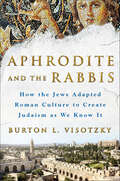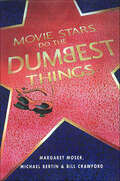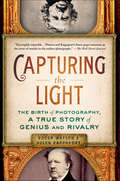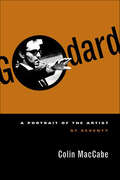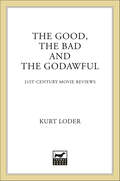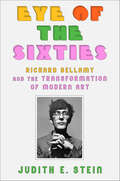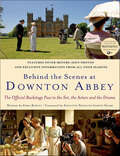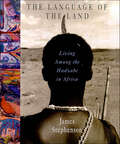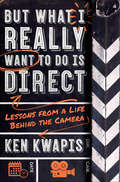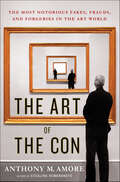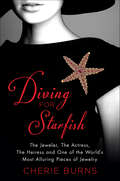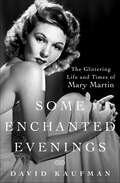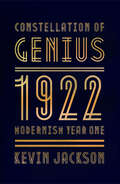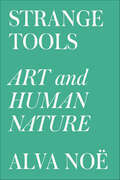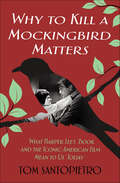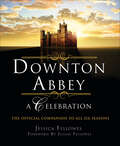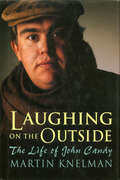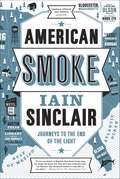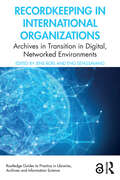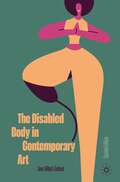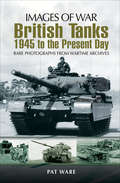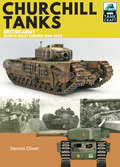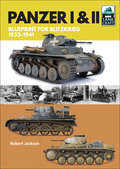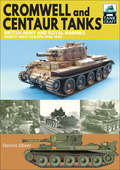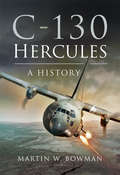- Table View
- List View
Aphrodite and the Rabbis: How the Jews Adapted Roman Culture to Create Judaism as We Know It
by Burton L. VisotzkyHard to believe but true:- The Passover Seder is a Greco-Roman symposium banquet- The Talmud rabbis presented themselves as Stoic philosophers- Synagogue buildings were Roman basilicas- Hellenistic rhetoric professors educated sons of well-to-do Jews- Zeus-Helios is depicted in synagogue mosaics across ancient Israel- The Jewish courts were named after the Roman political institution, the Sanhedrin- In Israel there were synagogues where the prayers were recited in Greek.Historians have long debated the (re)birth of Judaism in the wake of the destruction of Jerusalem and the Temple cult by the Romans in 70 CE. What replaced that sacrificial cult was at once something new–indebted to the very culture of the Roman overlords–even as it also sought to preserve what little it could of the old Israelite religion. The Greco-Roman culture in which rabbinic Judaism grew in the first five centuries of the Common Era nurtured the development of Judaism as we still know and celebrate it today. Arguing that its transformation from a Jerusalem-centered cult to a world religion was made possible by the Roman Empire, Rabbi Burton Visotzky presents Judaism as a distinctly Roman religion. Full of fascinating detail from the daily life and culture of Jewish communities across the Hellenistic world, Aphrodite and the Rabbis will appeal to anyone interested in the development of Judaism, religion, history, art and architecture.
Movie Stars Do the Dumbest Things
by Margaret Moser Michael Bertin Bill CrawfordJohnny Depp. Marilyn Monroe. Marlon Brando. Leonardo DiCaprio. Woody Allen. Shanron Stone. What do all of these actors have in common? They're outrageous, receive huge salaries, have enormous egos, and have way too much spare time. Their out-of-control lifestyles prove that, as one Hollywood observer noted, "Hollywood is a trip through a sewer in a glass-bottomed boat." You'll learn which director was furious when he was misquoted as saying, "Actors are cattle." He claimed he had really said, "Actors should be treated as cattle." You'll discover that Bruce Wilis ordered the final scenes in Striking Distance to be re-shot at a cost of over $750,000 because the original shots exposed his toupee.You'll find that Melanie Griffith explained her ignorance of the Nazi holocaust by saying, "I don't know why I didn't know. Maybe I missed school that day...I'm not stupid." Whether you're a fan of Hugh Grant, Dennis Hopper, or Whoopi Goldberg, you'll learn about all of the embarrassing moments in your favorite star's life. From actors like Ben Affleck and Cameron Diaz to screen legends like Frank Sinatra and Judy Garland, Movie Stars Do the Dumbest Things is proof that actors are more childish and impulsive than you've ever imagined.
Capturing the Light: The Birth of Photography, a True Story of Genius and Rivalry
by Roger Watson Helen RappaportAn intimate look at the journeys of two men—a gentleman scientist and a visionary artist—as they struggled to capture the world around them, and in the process invented modern photographyDuring the 1830s, in an atmosphere of intense scientific enquiry fostered by the industrial revolution, two quite different men—one in France, one in England—developed their own dramatically different photographic processes in total ignorance of each other's work. These two lone geniuses—Henry Fox Talbot in the seclusion of his English country estate at Lacock Abbey and Louis Daguerre in the heart of post-revolutionary Paris—through diligence, disappointment and sheer hard work overcame extraordinary odds to achieve the one thing man had for centuries been trying to do—to solve the ancient puzzle of how to capture the light and in so doing make nature 'paint its own portrait'. With the creation of their two radically different processes—the Daguerreotype and the Talbotype—these two giants of early photography changed the world and how we see it. Drawing on a wide range of original, contemporary sources and featuring plates in colour, sepia and black and white, many of them rare or previously unseen, Capturing the Light by Roger Watson and Helen Rappaport charts an extraordinary tale of genius, rivalry and human resourcefulness in the quest to produce the world's first photograph.
Godard: A Portrait of the Artist at Seventy
by Colin MacCabeAn intimate portrait of the turmoil that spawned the New Wave in French Cinema, and the story of its greatest director, Jean-Luc Godard. Godard's early films revolutionized the language of cinema. Hugely prolific in his first decade--Breathless, Contempt, Pierrot le Fou, Alphaville, and Made in USA are just a handful of the seminal works he directed--Godard introduced filmgoers to the generation of stars associated with the trumpeted sexuality of postwar movies and culture: Brigitte Bardot, Jean Seberg, Jean-Paul Belmondo, and Anna Karina. As the sixties wore on, however, Godard's life was transformed. The Hollywood he had idolized began to disgust him, and in the midst of the socialist ferment in France his second wife introduced him to the activist student left. From 1968 to 1972, Europe's greatest director worked in the service of Maoist politics, and continued thereafter to experiment on the far peripheries of the medium he had transformed. His extraordinary later works are little seen or appreciated, yet he remains one of Europe's most influential artists.Drawing on his own working experience with Godard and his coterie, Colin MacCabe, in this first biography of the director, has written a thrilling account of the French cinema's transformation in the hands of Truffaut, Rohmer, Rivette, and Chabrol--critics who toppled the old aesthetics by becoming, legendarily, directors themselves--and Godard's determination to make cinema the greatest of the arts.
The Good, the Bad, and the Godawful: 21st-Century Movie Reviews
by Kurt LoderThe former Rolling Stone writer and MTV host takes off from classic Roger Ebert and sails boldly into the new millennium.Millions grew up reading the author's record reviews and watching him on MTV's "The Week in Rock." In this collection of more than 200 movie reviews from MTV.com and, more recently, the Reason magazine Website, plus sidebars exclusive to this volume, Loder demonstrates his characteristic wry voice and finely honed observations. The author shines when writing on the best that Hollywood and indie filmmakers have to offer, and his negative reviews are sometimes more fun than his raves. This freewheeling survey of the wild, the wonderful and the altogether otherwise is an indispensable book for any film buff.
Eye of the Sixties: Richard Bellamy and the Transformation of Modern Art
by Judith E. SteinIn 1959, Richard Bellamy was a witty, poetry-loving beatnik on the fringe of the New York art world who was drawn to artists impatient for change. By 1965, he was representing Mark di Suvero, was the first to show Andy Warhol’s pop art, and pioneered the practice of “off-site” exhibitions and introduced the new genre of installation art. As a dealer, he helped discover and champion many of the innovative successors to the abstract expressionists, including Claes Oldenburg, James Rosenquist, Donald Judd, Dan Flavin, Walter De Maria, and many others. The founder and director of the fabled Green Gallery on Fifty-Seventh Street, Bellamy thrived on the energy of the sixties. With the covert support of America’s first celebrity art collectors, Robert and Ethel Scull, Bellamy gained his footing just as pop art, minimalism, and conceptual art were taking hold and the art world was becoming a playground for millionaires. Yet as an eccentric impresario dogged by alcohol and uninterested in profits or posterity, Bellamy rarely did more than show the work he loved. As fellow dealers such as Leo Castelli and Sidney Janis capitalized on the stars he helped find, Bellamy slowly slid into obscurity, becoming the quiet man in oversize glasses in the corner of the room, a knowing and mischievous smile on his face.Born to an American father and a Chinese mother in a Cincinnati suburb, Bellamy moved to New York in his twenties and made a life for himself between the Beat orbits of Provincetown and white-glove events like the Guggenheim’s opening gala. No matter the scene, he was always considered “one of us,” partying with Norman Mailer, befriending Diane Arbus and Yoko Ono, and hosting or performing in historic Happenings. From his early days at the Hansa Gallery to his time at the Green to his later life as a private dealer, Bellamy had his finger on the pulse of the culture. Based on decades of research and on hundreds of interviews with Bellamy’s artists, friends, colleagues, and lovers, Judith E. Stein’s Eye of the Sixties rescues the legacy of the elusive art dealer and tells the story of a counterculture that became the mainstream. A tale of money, taste, loyalty, and luck, Richard Bellamy’s life is a remarkable window into the art of the twentieth century and the making of a generation’s aesthetic.--"Bellamy had an understanding of art and a very fine sense of discovery. There was nobody like him, I think. I certainly consider myself his pupil." --Leo Castelli
Behind the Scenes at Downton Abbey: The Official Backstage Pass to the Set, the Actors and the Drama
by Emma RowleyGain unprecedented behind-the-scenes access to Downton Abbey in this official Season 4 tie-in book, complete with never-before-seen photos giving fans insight into the making of the runaway hit--a perfect gift for fans of the Emmy Award-winning series and feature film.Expertly crafted with generous inside knowledge and facts, Emma Rowley's Behind the Scenes at Downton Abbey delves into the inspiration behind the details seen on screen, the choice of locations, the music and much more. Step inside the props cupboard or the hair and make-up truck and catch a glimpse of the secret backstage world.In-depth interviews and exclusive photos give insight into the actors' experiences on set as well as the celebrated creative team behind the award-winning drama. Straight from the director's chair, this is the inside track on all aspects of the making of the show.Featuring a Foreword by Gareth Neame, executive producer of Downton Abbey
The Language of the Land: Living Among the Hadzabe in Africa
by James StephensonA rare adventure with the last Stone Age hunting and gathering tribe in Africa.In 1997 James Stephenson arranged to have almost a full year free, a year he wanted to spend among the Hadzabe in Tanzania. He had visited these people several times previously and with every trip his fascination with them deepened, for the Hadzabe are the last hunters and gatherers still living a traditional life in East Africa.At the age of 27, Stephenson intended to spend the year living among the Hadzabe, and, more importantly, living their life, hunting what they hunted, eating what they ate, participating in their dances and ceremonies, consulting with their medicine men and learning their myths and dreams.Armed only with his camera, his art supplies and the open-hearted courage of youth, he set out to visit with a people who have changed little since the Stone Age. He wanted to glimpse the world as they perceived it and learn the wisdom they had wrestled from the land. The Language of the Land, the account of his adventure and what he learned, is travel writing at its best.
But What I Really Want to Do Is Direct: Lessons from a Life Behind the Camera
by Ken KwapisFor over three decades, director Ken Kwapis has charted a career full of exceptional movies and television, from seminal shows like The Office to beloved films like He’s Just Not That Into You.He is among the most respected directors in show business, but getting there wasn’t easy. He struggled just like everyone else. With each triumph came the occasional faceplant. Using his background and inside knowledge, But What I Really Want To Do is Direct tackles Hollywood myths through Ken’s highly entertaining experiences. It’s a rollercoaster ride fueled by brawls with the top brass, clashes over budgets, and the passion that makes it all worthwhile.This humorous and refreshingly personal memoir is filled with inspiring instruction, behind-the-scenes hilarity, and unabashed joy. It’s a celebration of the director’s craft, and what it takes to succeed in show business on your own terms. "Ken Kwapis always brought out the best in the actors on The Office. Whenever Ken was directing, I always felt safe to go out on a limb and take chances, knowing he had my back. Every aspiring director should read this book. (I can think of several 'professional' directors that should read it too!)" -Jenna Fischer"A vital, magnificent manifesto on the art and craft of directing, written with emotional, instinctual and intellectual depth by one of America's most beloved film and television directors" -Amber Tamblyn"In the years that I was fortunate to work with Ken on Malcolm in the Middle, he had an uncanny ability to guide actors right to the heart of a scene and reveal its truths. He admits that he doesn’t have all the answers, he’ll make mistakes, and at times he’ll struggle, but as he says in the book, 'It’s the struggle to get it right that makes us human.'" -Bryan Cranston"Good luck finding a more kind, passionate, and talented director alive than Ken. Seriously, good luck." -Tig Notaro“'Action!' is what most directors bark out to begin a scene. But Ken Kwapis starts by gently intoning the words 'Go ahead…' That simple suggestion assures everyone they’re in smart, capable, humble hands. That’s how you’ll feel reading this book. And so, if you’re anxious to discover how a top director always brings humor, honesty, and humanity to his work, all I can tell you is…Go ahead." -Larry Wilmore
The Art of the Con: The Most Notorious Fakes, Frauds, and Forgeries in the Art World
by Anthony M. AmoreArt scams are today so numerous that the specter of a lawsuit arising from a mistaken attribution has scared a number of experts away from the business of authentication and forgery, and with good reason. Art scams are increasingly convincing and involve incredible sums of money. The cons perpetrated by unscrupulous art dealers and their accomplices are proportionately elaborate. Anthony M. Amore's The Art of the Con tells the stories of some of history's most notorious yet untold cons. They involve stolen art hidden for decades; elaborate ruses that involve the Nazis and allegedly plundered art; the theft of a conceptual prototype from a well-known artist by his assistant to be used later to create copies; the use of online and television auction sites to scam buyers out of millions; and other confidence scams incredible not only for their boldness but more so because they actually worked. Using interviews and newly released court documents, The Art of the Con will also take the reader into the investigations that led to the capture of the con men, who oftentimes return back to the world of crime. For some, it's an irresistible urge because their innocent dupes all share something in common: they want to believe.
Diving for Starfish: The Jeweler, The Actress, The Heiress and One of the World's Most Alluring Pieces of Jewelry
by Cherie BurnsBoth a history of fine jewelry coming out of Paris in the Golden Age and a tour through the secretive world of high-end, privately-sold jewelry, Diving for Starfish is a stylish detective story with a glittering piece of jewelry at its heart. In the mid 1930s, in the workroom of the famous Parisian jeweler Boivin, a young jewelry designer named Juliette Moutard created one of the most coveted pieces of jewelry in the world—the famous starfish pin—still sought after today by aficionados of fine jewelry. The starfish, created out of gold and encrusted with 71 cabochon rubies and 241 small amethysts, was distinctive because its five rays were articulated, meaning that they could curl and conform to the bustline or shoulder of the women who wore it. The House of Boivin made three of them. Two of the women who bought and wore the starfish were Claudette Colbert and Millicent Rogers. Obsessed with the pin after she saw it in the private showroom of a Manhattan jewelry merchant, Cherie Burns set off on a journey to find out all she could about the elusive pins and the women who owned them. Her search took her around the world to Paris, London, New York, and Hollywood. Diving for Starfish is the story of these marvelous pieces of jewelry and the equally dazzling women who loved them.
Some Enchanted Evenings: The Glittering Life and Times of Mary Martin
by David KaufmanMary Martin was one of the greatest stars of her day. Growing up in Texas, she was married early to Benjamin Hagman and gave birth to her first child, Larry Hagman. She was divorced even more quickly. Martin left little Larry with her parents and took off for Hollywood. She didn't make a dent in the movie industry and was lured to New York where she found herself auditioning for Cole Porter and his new show "Leave It to Me!". After she sang the bawdy "My Heart Belongs to Daddy", she ended up on the cover of Life magazine. Six years later, she became the Toast of Broadway when she starred in "South Pacific". After that, she flew as "Peter Pan", yodeled in "The Sound of Music", took "Hello, Dolly!" on the road and shared a four-poster with Robert Preston in "I Do! I Do!". Her personal life was just as interesting: In NYC, she met and married Richard Halliday, a closeted upper-class homosexual who adored her, Broadway and interior decorating (though probably not in that order). They were a powerful twosome. There were rumors about Martin, too, being in a lesbian relationship with both Janet Gaynor and Jean Arthur. Peopled with legends like Ethel Merman, Ezio Pinza, Noel Coward and a starry cast of thousands, David Kaufman's "Some Enchanted Evenings" is the delectable story of the one and only Mary Martin, a woman who described herself as a chicken farmer from Texas only to become Peter Pan and capture America's heart.
Constellation of Genius: 1922, Modernism Year One
by Kevin JacksonEzra Pound referred to 1922 as Year One of a new era. It was the year that began with the publication of James Joyce's Ulysses and ended with the publication of T. S. Eliot's The Waste Land, two works that were arguably "the sun and moon" of modernist literature, some would say of modernity itself.In Constellation of Genius, Kevin Jackson puts the titanic achievements of Joyce and Eliot in the context of the world in which their works first appeared. As Jackson writes in his introduction, "On all sides, and in every field, there was a frenzy of innovation." It is in 1922 that Hitchcock directs his first feature; Kandinsky and Klee join the Bauhaus; the first AM radio station is launched; Walt Disney releases his first animated shorts; and Louis Armstrong takes a train from New Orleans to Chicago, heralding the age of modern jazz. On other fronts,Einstein wins the Nobel Prize in Physics, insulin is introduced to treat diabetes, and the tomb of Tutankhamun is discovered. As Jackson writes, the sky was "blazing with a ‘constellation of genius' of a kind that had never been known before, and has never since been rivaled."Constellation of Genius traces an unforgettable journey through the diaries of the actors, anthropologists, artists, dancers, designers, filmmakers, philosophers, playwrights, politicians, and scientists whose lives and works—over the course of twelve months—brought a seismic shift in the way we think, splitting the cultural world in two. Was this a matter of inevitability or of coincidence? That is for the reader of this romp, this hugely entertaining chronicle, to decide.
Strange Tools: Art and Human Nature
by Alva NoëA philosopher makes the case for thinking of works of art as tools for investigating ourselvesIn his new book, Strange Tools: Art and Human Nature, the philosopher and cognitive scientist Alva Noë raises a number of profound questions: What is art? Why do we value art as we do? What does art reveal about our nature? Drawing on philosophy, art history, and cognitive science, and making provocative use of examples from all three of these fields, Noë offers new answers to such questions. He also shows why recent efforts to frame questions about art in terms of neuroscience and evolutionary biology alone have been and will continue to be unsuccessful.
Why to Kill a Mockingbird Matters: What Harper Lee's Book and the Iconic American Film Mean to Us Today
by Tom SantopietroTom Santopietro, an author well-known for his writing about American popular culture, delves into the heart of the beloved classic and shows readers why To Kill a Mockingbird matters more today than ever before.With 40 million copies sold, To Kill a Mockingbird’s poignant but clear eyed examination of human nature has cemented its status as a global classic. Tom Santopietro's new book, Why To Kill a Mockingbird Matters, takes a 360 degree look at the Mockingbird phenomenon both on page and screen.Santopietro traces the writing of To Kill a Mockingbird, the impact of the Pulitzer Prize, and investigates the claims that Lee’s book is actually racist. Here for the first time is the full behind the scenes story regarding the creation of the 1962 film, one which entered the American consciousness in a way that few other films ever have. From the earliest casting sessions to the Oscars and the 50th Anniversary screening at the White House, Santopietro examines exactly what makes the movie and Gregory Peck’s unforgettable performance as Atticus Finch so captivating.As Americans yearn for an end to divisiveness, there is no better time to look at the significance of Harper Lee's book, the film, and all that came after.
Downton Abbey: The Official Companion to All Six Seasons (The World of Downton Abbey)
by Jessica FellowesThis perfect present allows fans to revisit the home and the lives of the family and staff of the Emmy Award-winning series--and now feature film--with Jessica Fellowes's Downton Abbey--A Celebration: The Official Companion to All Six Seasons."Downton Abbey set a new standard, and it's probable that in 20 or 50 years critics will look back and say that this was period drama at its very best, often imitated but never bettered." —The Daily MailSince the moment we first entered Downton Abbey in 1912, we have been swept away by Julian Fellowes’s evocative world of romance, intrigue, drama and tradition. Now, in 1925, as Downton Abbey prepares to close its doors for the final time, Jessica Fellowes leads us through the house and estate, reliving the iconic moments of the wonderfully aristocratic Crawley family and their servants as they navigate the emerging modern age.Travelling from Great Hall to servants’ hall, bedroom to boot room, we glimpse as we go Matthew and Isobel Crawley arriving for the first time, the death of Kemal Pamuk, Cora’s tragic miscarriage, Edith’s affair with Michael Gregson, Mary’s new haircut, Thomas and O’Brien’s scheming, Anna and Bates’s troubles with the law, and Carson’s marriage to Mrs Hughes.Alongside are in-depth interviews with the cast, who have worked on the show for six years and know it so well, as well as a complete episode guide for the first five seasons and a teaser for the sixth. Packed full of stunning location shots and stills from all six seasons of the show including exclusive behind-the-scenes photography, this celebratory book is the ultimate gift for Downton Abbey fans the world over.
Laughing on the Outside: The Life of John Candy
by Martin KnelmanFunny and gentle, John Candy was loved by millions of movie fans for playing true-to-life characters. Whether as the irrepressible bon vivant in Splash, the misunderstood slob in Uncle Buck, or the generous lonely salesman in Planes, Trains, and Automobiles, John Candy struck a perfect balance between self-deprecating humor and irresistible, emotional warmth. But behind the scenes, beneath the booming laughter, award-winning journalist Martin Knelman in Laughing on the Outside paints a compassionate portrait of John Candy--a man blessed by comic genius and goodness of heart who was ultimately and sadly undermined by self-doubt and misguided ambition.
American Smoke: Journeys to the End of the Light
by Iain SinclairThe visionary writer Iain Sinclair turns his sights to the Beat Generation in America in his most epic journey yet"How best to describe Iain Sinclair?" asks Robert Macfarlane in The Guardian. "A literary mud-larker and tip-picker? A Travelodge tramp (his phrase)? A middle-class dropout with a gift for bullshit (also his phrase)? A toxicologist of the twenty-first-century landscape? A historian of countercultures and occulted pasts? An intemperate WALL-E, compulsively collecting and compacting the city's textual waste? A psycho-geographer (from which term Sinclair has been rowing away ever since he helped launch it into the mainstream)? He's all of these, and more." Now, for the first time, the enigma that is Iain Sinclair lands on American shores for his long-awaited engagement with the memory-filled landscapes of the American Beats and their fellow travelers. A book filled with bad journeys and fated decisions, American Smoke is an epic walk in the footsteps of Malcolm Lowry, Charles Olson, Jack Kerouac, William Burroughs, Gary Snyder, and others, heated by obsession (the Old West, volcanoes, Mexico) and enlivened by false memories, broken reports, and strange adventures. With American Smoke, Sinclair confirms his place as the most innovative of our chroniclers of the contemporary.
Recordkeeping in International Organizations: Archives in Transition in Digital, Networked Environments (Routledge Guides to Practice in Libraries, Archives and Information Science)
by Jens Boel Eng SengsavangRecordkeeping in International Organizations offers an important treatment of international organizations from a recordkeeping perspective, while also illustrating how recordkeeping can play a vital role in our efforts to improve global social conditions.Demonstrating that organizations have both a responsibility and an incentive to effectively manage their records in order to make informed decisions, remain accountable to stakeholders, and preserve institutional history, the book offers practical insights and critical reflections on the effective management, protection, and archiving of records. Through policy advice, surveys, mind mapping, case studies, and strategic reflections, the book provides guidance in the areas of archives, records, and information management for the future. Among the topics addressed are educational requirements for recordkeeping professionals, communication policies, data protection and privacy, cloud computing, classification and declassification policies, artificial intelligence, risk management, enterprise architecture, and the concepts of extraterritoriality and inviolability of archives. The book also offers perspectives on how digital recordkeeping can support the UN’s 2030 Agenda for Sustainable Development, and the accompanying Sustainable Development Goals (SDGs).Recordkeeping in International Organizations will be essential reading for records and archives professionals, information technology, legal, security, management, and leadership staff, including chief information officers. The book should also be of interest to students and scholars engaged in the study of records, archives, and information management, information technology, information security, and law.Chapters 7 and 9 of this book are freely available as a downloadable Open Access PDF at http://www.taylorfrancis.com under a Attribution-NonCommercial-ShareAlike (CC-BY-NC-SA) 4.0 license
The Disabled Body in Contemporary Art
by Ann Millett-GallantThe second edition offers an essential update to the foundational first edition, The Disabled Body in Contemporary Art. Featuring updated chapters and case studies, this second edition will not only expand on the first edition but will bring a new focus to contemporary disabled artists and their embodied, multimedia work.
British Tanks: 1945 To The Present Day (Images of War)
by Pat WareIn this companion volume to British Tanks: The Second World War, Pat Ware provides an expert introduction to the design, production and operation of British tanks since 1945. Fewer types of tank were built than during the wartime period, but the complexity of design and manufacture increased, and a level of technical sophistication in the key areas of armor, firepower and mobility was beyond the imaginings of the tank pioneers of the First World War.Using a selection of contemporary photographs supported by some modern photographs of preserved vehicles Pat Ware sets the modern tank in a historical context. He describes its origins in Britain and its development and deployment in the Second World War and in the post-war period. All the British tanks that have seen service since the war are depicted, among them the Conqueror, Chieftain, Centurion and Challenger. The engineers tanks the flails, recovery vehicles, bridge-layers are featured, as are the less-well-known British tanks made for export.This highly illustrated survey gives a fascinating insight into the recent evolution of the British tank and its role in the postwar world.Pat Ware is a leading expert on the history of military vehicles and a prolific writer of books and articles on every aspect of the subject. His most recent publications include a study of the military Jeep and encyclopaedias of military vehicles and motorcycles. He was the founding editor of Classic Military Vehicle magazine in 2001 and continues to contribute to the magazine as well as writing a military column for Land Rover World.
Churchill Tanks: British Army, Northwest Europe, 1944–45 (Tankcraft Ser. #4)
by Dennis OliverThis fully illustrated study of these iconic WWII tanks will be “of great interest to history buffs and an inspirational aid to modelers” (Toy Soldier & Model Figure).Designed as a heavily armored tank which could accompany infantry formations, the Churchill Tank’s ability to cross rough ground and climb seemingly unassailable hills became legendary. The tank first saw action in 1942 and the basic design was constantly reworked and up-gunned, culminating in the Mark VII version which was capable of taking on the heaviest German tanks. In this volume of the TankCraft series, Dennis Oliver uses archive photographs and thoroughly researched, vividly presented color profiles to tell the story of these fearsome British tanks. A full color section features available model kits and accessories as well as aftermarket products. In addition to the color profiles there is a gallery of expertly constructed and painted models. A separate section explains technical details and production modifications giving the modeler all the information and knowledge required to recreate an authentic reproduction of one of the tanks that contributed so much to the British effort in the battles for Normandy and the liberation of Europe.
Panzer I & II: Blueprint for Blitzkrieg, 1933–1941 (TankCraft #7)
by Robert JacksonThe Panzer I and II played a significant part in the blitzkrieg campaigns that brought Germany such extraordinary success in the early years of the Second World War, and this highly illustrated volume in the TankCraft series is the ideal introduction to them.The Treaty of Versailles forbade Germany to manufacture tanks so the Panzer I had to be developed in strict secrecy, but by the time of the invasion of Poland the Wehrmacht had over 1400 of these light tanks. The Panzer II was an interim design, bridging the gap between the Panzer I and subsequent, far more viable armored fighting vehicles like the Panzer III and IV.As well as tracing the history of the Panzer I and II, Robert Jackson's book is an excellent source of reference for the modeler, providing details of available kits, together with artworks showing the color schemes applied to these tanks. Each section of the book is supported by a wealth of wartime photographs as well as diagrams showing the technical changes that were made to these tanks in the course of their careers.
Cromwell and Centaur Tanks: British Army and Royal Marines, North-west Europe, 1944–1945 (Tank Craft Ser. #16)
by Dennis Oliver&“An excellent resource for one just starting out trying to model one of these beasts . . . great background information.&” —AMPS Designed with the hard lessons of the North African campaign in mind, including the adoption of a dual-purpose gun capable of firing high-explosive and anti-tank rounds, the Cromwell was one of the most successful of the British cruiser tanks produced during the Second World War. The lack of heavy armor was made up for by the tank&’s high speed, provided by a Rolls-Royce Meteor engine. The Centaur was externally almost identical to the Cromwell, the major difference being the installation of the less powerful Liberty engine. While the Centaur equipped the Royal Marines during the Normandy battles, the Cromwell served until the end of the war and formed the basis for the Comet. In his fifth book in the TankCraft series, author and illustrator Dennis Oliver uses official wartime photographs and comprehensively researched, exquisitely presented color profiles to tell the story of the penultimate British cruiser tank. As with all the titles in the TankCraft series, the large full-color section features available model kits and accessories as well as aftermarket products. In addition to the color profiles, there is a gallery of expertly constructed and painted models. A separate section explains technical details and modifications made during production and in the field, giving the modeler all the information required to create an authentic replica of one of the tanks that served from the Normandy beaches to the final battles in Germany.
C-130 Hercules: A History
by Martin W. Bowman&“An engaging retrospective on the long-lived and ubiquitous C-130 Hercules tactical airlifter . . . Sweeping in its scope . . . an invaluable reference.&” —Aviation History Designed in response to a 1951 requirement, the C-130 Hercules is the most successful military airlifter ever built. Since it first flew in prototype form on August 23, 1954, more than 2,100 have been produced in over eighty different versions. Across its variants, the Hercules serves more than sixty air forces, as well as many civilian cargo operators, in a multiplicity of roles, including air-to-air refueller, gunship, airborne command post, flying hospital, and firefighter. This rugged and easily maintained aircraft entered service in 1956 with the USAF Tactical Air Command. Ten years later, the &“Charlie 130&” was providing essential logistical support in Vietnam. This period in Southeast Asia was the Hercules&’ finest hour. Paradrops, airlift, and evacuation operations were completed around the clock, often at low level, usually under fire and nearly always in bad weather. A generation later, this &“Mr. Dependable&” was serving with equal distinction in the Gulf War in the role of airlifter, radio-countermeasures, and &“psy-ops&” platform, gunship and, once again, &“block-buster bomber.&” The &“Herky Bird&” or &“Fat Albert,&” as the C-130 is fondly known, has proved a key component in humanitarian relief operations, as well, in all parts of the world. &“Martin&’s technical and informative look at their creation and use is absolutely fascinating. An iconic aircraft gets Martin&’s VIP treatment in this wonderful book.&” —Books Monthly &“A history of an aviation great, from the pen of a popular and well-established author of aviation history.&” —Firetrench
